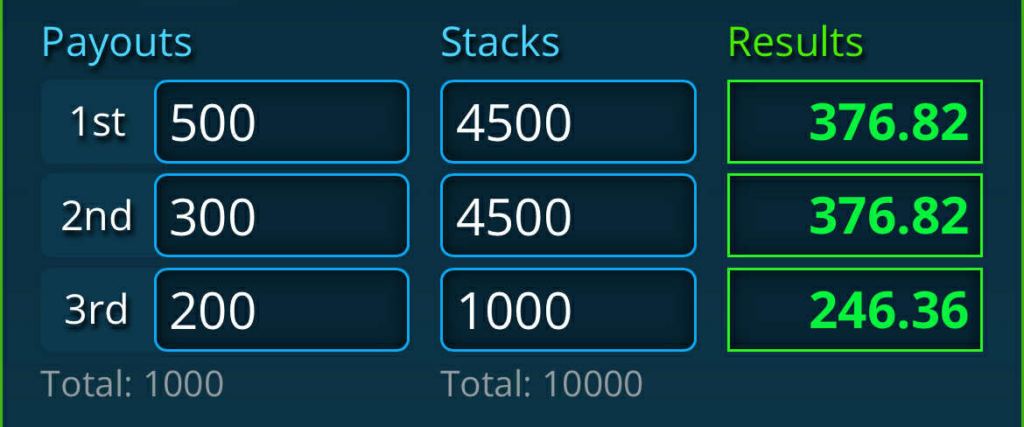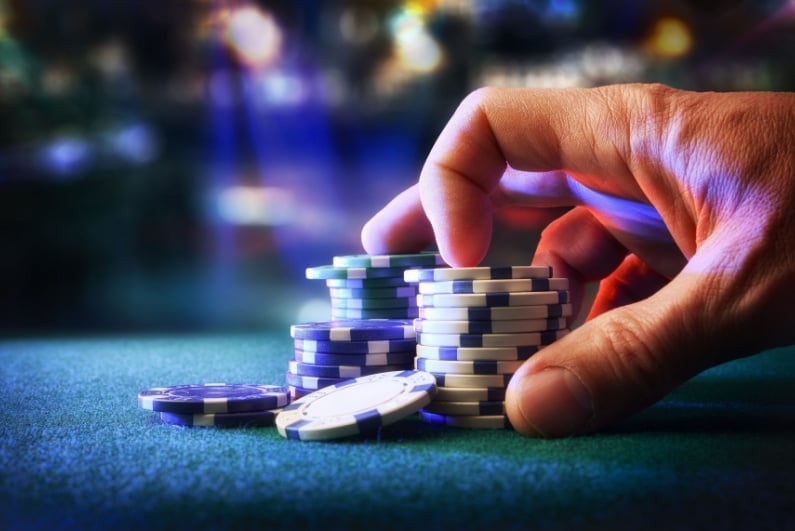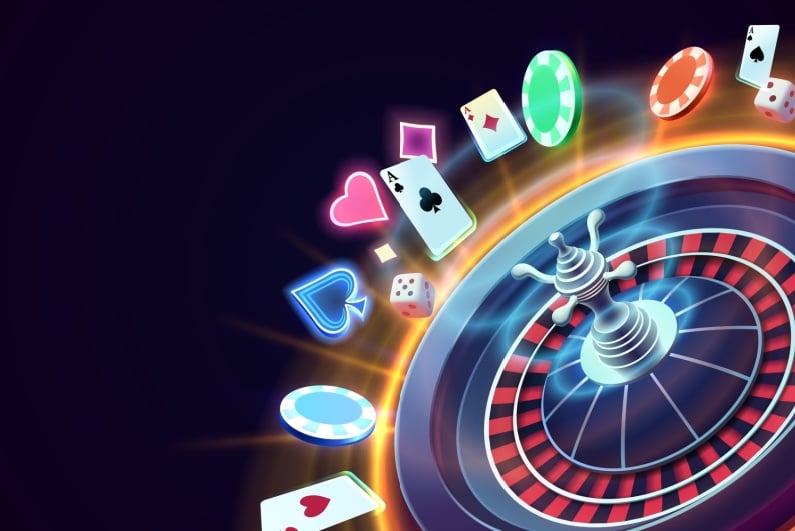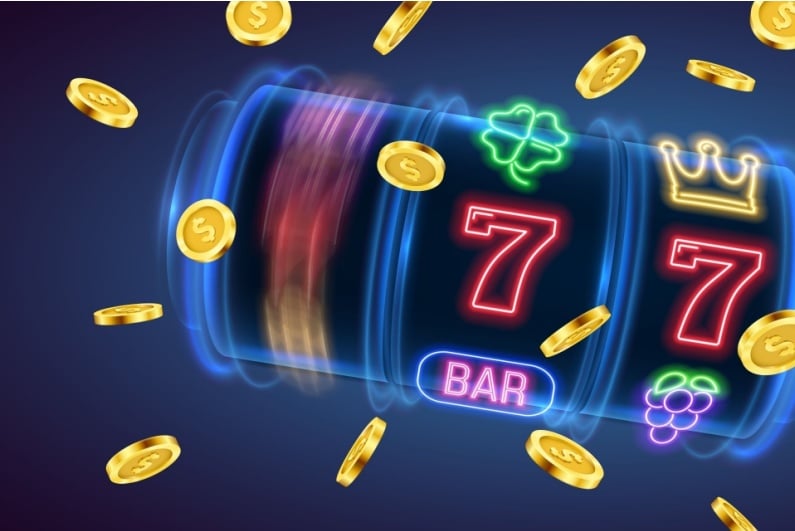I cut my teeth in online sit and go’s. To survive in them, you needed to understand Independent Chip Model (ICM) strategy, so that’s always been one of my biggest strengths as a player, and specializations as a coach. I even wrote an entire book on it (Endgame Poker Strategy) and released a course on Postflop ICM at SimplifyPoker.

Back when I started, there were no solvers. We could calculate ICM bubble factor and its related concept Risk Premium from first principles (as I’m about to do in this article), and then work out manually how it affected strategy, in particular, preflop ranges.
The arrival of the solvers removed the need to do this. Tools like Holdem Resources Calculator and ICMizer allowed you to enter preflop ranges for your opponents (or have the tool calculate their GTO ranges), stack sizes, and payouts, and then the tool can work out your profitable continue range.
entire generations learn ICM almost by rote, monkey see monkey do
This is all well and good, but one downside of it is that entire generations learn ICM almost by rote, monkey see monkey do. I’ve been guilty of coaching players to this level where they understand the what (bubble factors and risk premiums are), the how (it affects strategy), but not the why. I’ve explained to them what bubble factors and risk premiums are using an ICM calculator, and taught them how to estimate it in game, and how to adjust their strategy accordingly.
Why is the why important? I’d rather wait til the end of this article to explain that. But I know for a fact there’s a lot of players in this ‘what, how, but not why’ camp, so recently I’ve started using logic to try to explain the why, and that’s what this article is all about.
So what is ICM and why is it important?
Let’s start with an example from the sit and go’s I used to play. They came in two varieties: six-player versions that paid two places, and ten-player versions that paid three places. Let’s go with the latter and say the starting stack was 1k in chips, the standard payouts for this format apply (500 to first, 300 for second, and third gets 200). Let’s say there are three players left, and we are one of them. We still only have starting 1k stack, and for simplicity, let’s say the other 9k is divided equally between the other two players.
we need to quantify our chances of coming first and second
How much is our stack worth? We are guaranteed 200 (for third), and we have some chance of doing better (coming second or first), so our stack must be worth a bit more than 200. To work out exactly how much more we need to quantify our chances of coming first and second.
What are our chances of coming first?
Assuming we are neither at a disadvantage or an advantage to our opponents in anything that affects our chances of winning, such as skill, table position etc, then logic tells us that with 10% of the chips we have exactly a 10% chance of winning. How much is this worth to us? Well, if we do win, in addition to the 200 we are already guaranteed, we will win another 300 (for 500 total). So 10% of the time we will win that extra 300. Something that gets us 300 extra 10% of the time is worth 30 (10% of 300) to us on average (another way of saying this is the expected value (EV) is 30).
And what about second?
Ok, so 10% of the time we will win. If we win we can’t come second obviously, and one of the other two players must win. Of the 90% of times we don’t win, how often will we come second? Again, we assume equal skill and all other factors affecting this so that our chances of coming second depends only on how many chips we have in relation to our opponents.
In this case, one of the other players will win, and we are up against someone with 4.5 times as much chips right now in the race to come second. Simple logic tells us that with 4.5 times as much chips they will come second 4.5 times as often, which means they’ll win nine times out of 11 (and we win the other two times out of 11). Expressed as a percentage, 2/11 of 90% is 16.36%. So 16.36% of the time we come second and win an extra 100 on top of the 200 we are already guaranteed. 16.36% of 100 is 16.36 (isn’t it incredible I can do this in my head?), which is how much EV our chances of coming second is worth to us.

So how much is our stack worth?
Adding this up our stack is therefore worth the 200 we already have locked up for third, plus 16.36 extra our chances of coming second is worth, plus another 30 that our chances of winning gives us, for a grand total of 246.36
Let’s check that in one of the ICM calculators I mentioned earlier.
Yup, same result. Only now you know how that was calculated rather than just “computer says….”
An aside
One thing worth noticing here is that even though our opponents both had 4.5 times as many chips as us, their stack is not worth 4.5 times as much as ours. Not even close: their stacks are worth 376.82. We could prove this by doing the same calculation for them as we just did for us, but that seems to be belabouring the point. A much easier way to work it out logically is that:
(1) Their stacks together must equal the total prize pool (1000) minus our “share” of it, how much our stack is currently worth (246.32). 1000 minus 246.36 equals 753.64.
(2) Since they have the same stack as each other, their stacks must be worth the same as each other, so half of 753.68, which equals 376.82. Which again matches what the ICM calculator says.

So even though their stacks are 4.5 times bigger than ours, they’re worth only slightly over 1.5 times a much as us. This fact gives us a clue as to why “tight is right.” Given the choice between two strategies.
(1) A conservative one that will get us to this position very often.
Or
(2) A more aggressive gambling style that means we will either have 4.5x starting, or be bust. Assuming we are using neutral EV spots to gamble up this stack, logic again tells us we will be bust 4.5 times as often as we will get to 4.5x.
Assessing the EV of strategy 1 is easy: it’s worth the 246.32 that stack is worth to us.
Assessing the EV of strategy 2 is almost as easy: using the same logic as before two times out of every 11 we will have a stack worth 376.82, and the rest of the time our stack will be worth nothing when we bust outside the money. Two elevenths of 376.82 is 68.51, way less than 246.32. So given the choice between a strategy that guarantees we get to here with just a starting stack, and one that sees us get there as one of the two big stacks or bust, the conservative strategy is way more profitable. Tight is right.
Why is this important?
Why does it matter what our stack is currently worth, unless we are negotiating a chop, you might ask. The reason it does is so we can assess upside versus downside when it comes to calling an all in.
Let’s take an example that builds on the one we are looking at. We have starting stack against two bigger stacks both of whom have 4.5x starting stack as described earlier. One of them shoves all in, and the other one calls. We now have two choices
(1) We can fold and assuming for simplicity they don’t chop, we are headsup, against whoever wins who will have 9 times our chips (for simplicity I’m also ignoring blinds and antes, which only make the calculations more complex without changing the conclusions)
(2) we can call and if we lose we get third, and if we win we are headsup with 30% of the chips after our triple up
How much is our stack worth in both these cases? In scenario one, we are guaranteed second at least (so 300) and we have a 10% chance of winning the extra 200 for first, worth 20 to us. So by folding the value of our stack increases from 246.32 to 320! Folding makes us 73.68 irrespective of who wins the pot. This illustrates an important distinction between cash games and tournaments: in a cash game folding is always 0 EV, but in a tournament it’s often very plus EV, as in this example.
our stack value jumps up to the 320 it’s worth if we just fold
Ok, on to scenario two. If we call and lose, we get third, 200. How much are we risking when we make the call. If you say 46.32 (246.32 representing the value of our stack at the start of the hand minus the 200 we end up getting) you are….. completely wrong. Yes our stack was worth 246.32 as the cards were dealt, but after our opponents went all in, call, our stack value jumps up to the 320 it’s worth if we just fold. So we are actually risking that 120, not the 46.32 any more.
How much is our stack worth if we call and win? Again, in this case we are guaranteed second (so 300), and with 30% of the chips have a 30% chance of winning the extra 200 (so that’s worth an additional 60 to use) for a total of 360. How much of a gain is this? Again if you say 360 minus 246.32 you’re wrong: it’s 360 minus the 320 we get for just folding.
So to summarise, when we call, we are risking 120 to win 40.
How does this affect our strategy?
We are risking 3 times as much as we stand to gain when we call. This number (3) is a concept referred to as “bubble factor” expressing how much worse losing is than winning (3 times worse in this case). Any time we risk 3 times what we stand to gain, we need to win 3 times out of 4 just to be breakeven. If we make this bet an infinite number of times and win more often than 3 times out of 4, we will make a profit (so it’s a good or profitable bet), and if we win less often than 3 times out of 4, we will make a loss (so it’s a bad or unprofitable bet).
Risk premium
This is another (related) way of calculating how big ICM is. Another way of saying we need to win 3 times out of 4 just to be breakeven is to express it as a percentage and say we have to win 75% of the time. How does this compare to a situation where there’s no ICM, like a cash game for example (or a winner takes all tournament)? When there’s no ICM and we have an all in and a call ahead of us, we only need to win one third of the time to break even (33.33%). In our high ICM example, we need to win 75% if the time, or 41.67% more often. This 41.67% is a premium arising from our risk of busting when we call, so it’s referred to as risk premium.
needing to win 75% of the time means we have to call off very very tight
Needless to say, needing to win 75% of the time means we have to call off very very tight. As an example, against two top 10% ranges, the worst hands we can call off without ICM are 99 and AKo, but with 41.67% risk premium it’s…..no hand. Even AA only wins just under 71% of the time.
F*ck ICM, or ICM is for poor people
You’ll sometimes hear brave (or foolhardy) souls declare “f*ck ICM, I play for the win”. Sometimes it’s a case of they’re so rich it doesn’t matter to them what makes them the most money in the long term, and they’re willing to sacrifice some money to experience the thrill of victory more often. And they will achieve both goals: they’ll make less money in the long run, but win more tournaments. That may seem illogical, so I’ll try to explain in a minute, after I point out that sometimes it’s not this, sometimes it’s just ignorance. They think that because they’ll win the tournament more often with this strategy, they won’t actually lose money in the long run. In an example like the one I just chose, some people could work out and most could intuit that folding is best unless you have a hand that wins most of the time against two opponents, because it’s a (deliberately) simple example. Most real life examples are way more calculated, to the point that nobody in the world could do the maths on the fly, and this is where our intuition can fail us. The best anyone can do is understand the factors that are causing ICM, make an educated guess as to how much they amount to in bubble factor or risk premium terms, and go from there.

Because here’s the thing. Adhering to ICM inevitably means having to find hands that are plus EV for chips but minus EV for dollars. And any time you do that, you hurt your chances of winning the tournament (but are compensated financially for that loss). In the example above, any time you fold a hand that wins more than a third of the time, you hurt your chances of winning the tournament. Our intuition recognizes this, which is why it hates to see us fold ace king in the spot. For most of us, our intuition is much worse at recognizing and quantifying how much additional compensation we pick up for folding, particularly in more complicated spots than “you’re guaranteed second if you fold”.
And this is why I think it’s important not to just understand the what and how, but also the why of ICM.




